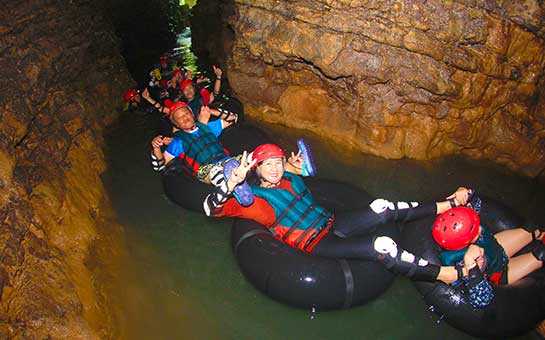Cave tubing is considered a fun adventure sport, but it is not without its share of risks. Floating through a maze of underground caves with nothing but your headlamp to guide you can be dangerous. That’s because there isn’t much specialized protective gear to keep you tethered in case of massive upheaval. If you’re going cave tubing on vacation, be sure to purchase cave tubing hazardous sports travel insurance to protect yourself against any unexpected accidents or injuries that could occur.
Travel Insurance for Cave Tubing
If you’re planning to partake in this activity while outside your home country, be sure you have a travel insurance plan that covers cave tubing. Most standard travel insurance plans don’t cover claims related to hazardous or adventurous sports activities. For this reason, you will need cave tubing travel insurance to make sure you stay covered.
Make sure you find out how many trips to the caves your insurance will cover, or if it will only cover a certain portion of the journey’s distance; underground caves can run for miles. You should solidify your itinerary in advance to ensure that you are adequately protected by cave tubing travel insurance, rather than deciding on the spur of the moment to sign up for a tour.
These caves are located in remote corners of the world, and depending on the country you are visiting, rescue, medical evacuation, and medical treatment could be more difficult than usual—as well as expensive. Planning ahead will give you the opportunity to buy an insurance plan with adventure sports coverage and enjoy peace of mind as you float underground.
What is Cave Tubing?
Cave tubing has become a popular tourist attraction in regions like Belize City and some parts of New Zealand and Australia. Cave tubing involves floating along underground waterways on an inflatable tube through hidden caves. The tubes are tethered together, but there is only one individual per tube.
The chain of tubes floats through underground rivers and lakes that disappear into caves. These caves and lakes were formed during prehistoric times, and exploring them is like entering another world, transporting you back in time. The caves can be as long as seven miles, and the tube simply follows the current, floating beneath the cave ceiling in whichever direction the water happens to flow.
Along the way, you’ll see breathtaking sights like ancient rock formations, a plethora of stalactites and stalagmites, cave paintings, and even cave-dwelling birds and insects.
The activity is gaining traction among tourists who want a taste of adventure sports without too much physical exertion. The tour operators employ expert guides to take you through the caves, and it is not at all advisable to venture into the caves alone if your guide is absent.
Risks of Cave Tubing
Although cave tubing does not involve much physical exertion like other adventure sports, it still has its share of risks.
A rogue undercurrent might suddenly lead your tube away from your intended route. If you are touring without a guide, you could lose your way—and in a worst-case scenario, you could even be stranded in some less-explored part of the cave.
There have also been reported cases of sudden surges in the underwater current, causing the cave or tunnel to flood. Cave divers have reported that cave can flood in a matter of minutes. Underground earthquakes are also intermittent occurrences. Considering the unpredictability of nature, flash floods might occur while you are cave tubing, as well.
Injuries resulting from cave tubing could include partial or complete submergence in water, a head injury from hitting a cave rock, a panic attack from being stranded, or being struck by a falling stalactite.
